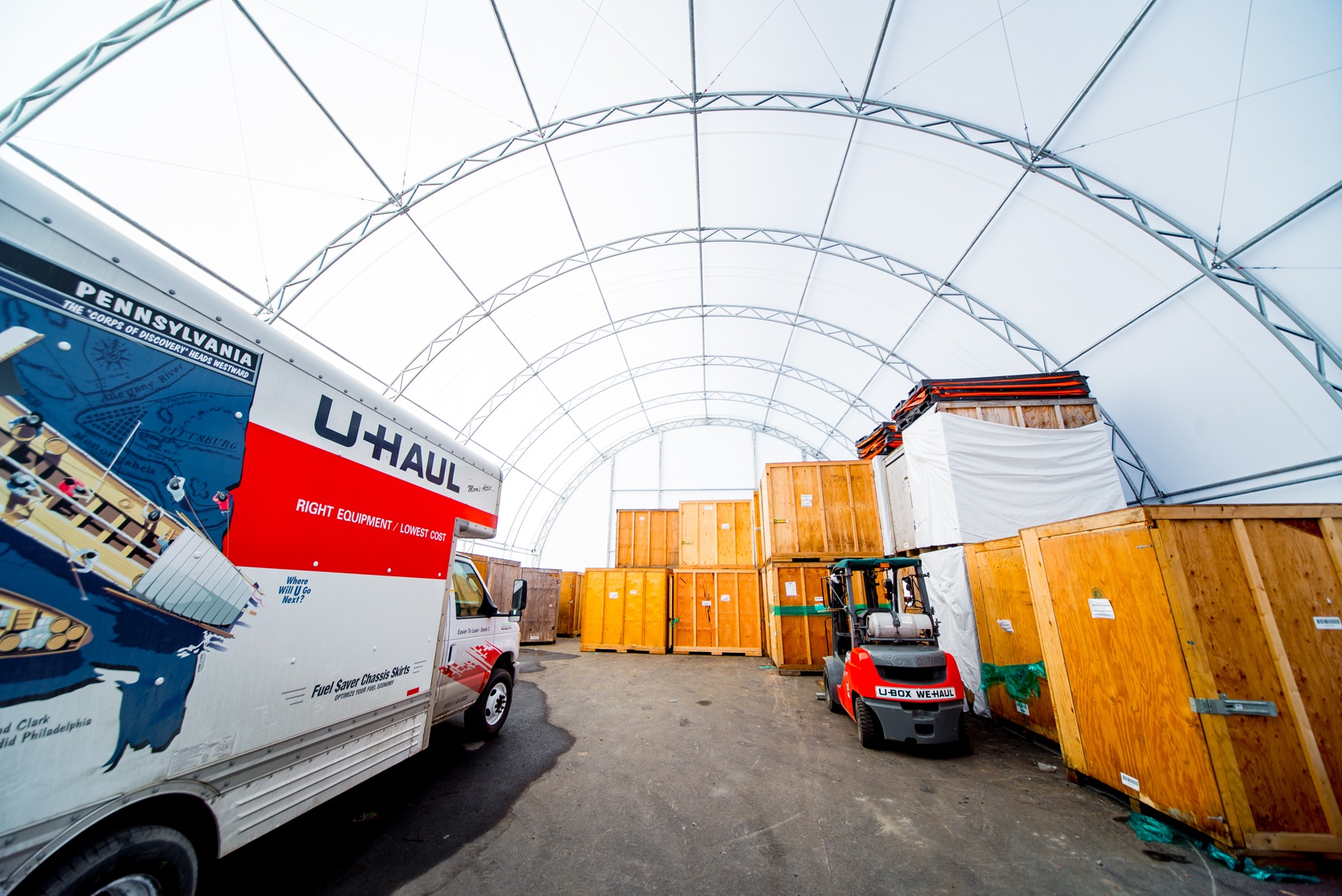Where Will Fabric Buildings Be in One Year From Now?
by Admin | May 29, 2018

According to Fabric Architecture Magazine, major trends to watch for in fabric buildings today are the increased focus on sustainable designs and engineering. Fabric roofs are environmentally sustainable in that they offer up to 12% translucency, thus minimizing reliance on conventional energy sources. The diffuse transmittance of tensile fabrics facilitates light control and shading, decreases the glare factor, and keeps the interiors of buildings bright. Because of its environmental benefits, fabric structures are growing in popularity, particularly in certain key industries.
The Automotive Industry
Nowhere is the trend towards sustainability more crucial than in hailstorm-prone regions of Canada. A new study claims that climate change will precipitate fewer hailstorms in North America in ensuing years. The downside, however, is that larger-sized hail will pummel the region. In 2017, powerful hailstorms caught many residents in Calgary and Saskatoon by surprise. The latter caused millions of dollars in damage; notably, both storms reportedly unleashed larger than normal-sized hail on the affected areas. Meanwhile, SGI (Saskatchewan Government Insurance) reported more than 2,000 claims for vehicle damage.
Hail damage to cars poses such a risk in hailstorm-prone regions in Canada that many auto insurance companies are rethinking insurance policies for car manufacturers. As a result, North American and European car makers are turning to hail fabric structures to secure their fleets. This solution, although viable, isn’t an absolute panacea. Incorrect design assumptions about snow/impact loads can and do lead to the collapse of hail structures.
At Calhoun Superstructures, our engineers comprise an elite few who utilize 3D Finite Element Nonlinear Analysis to provide an accurate picture of stress loads. Additionally, critical framework components are hot-dipped galvanized (HDG) after fabrication. Thus, our fabric structures are robust, resilient, and built to last.
The Cannabis Industry
With the legalization of recreational marijuana on the horizon in Canada, fabric buildings are fast becoming a sustainable alternative to conventional greenhouses: they are relocatable, expandable, and cost-effective.
In Canada, the target date for the legalization of marijuana may be July 2018, but those looking to cash in on the “green rush” are already fretting. The reason? In states which have legalized recreational marijuana in the U.S., for example, the resultant land grab has disproportionately increased the sticker prices of warehouse facilities. A typical example is Sacramento, which has seen light industrial buildings retailing for twice the price and rental costs increasing to 5 times the normal rate.
Realtors in the Sacramento area are reporting that buildings which previously sold for $50/ square foot are now retailing at no less than $100/ square foot. The situation is so dire that new “ganjapreneurs” are prompted to relocate their base of operations to areas outside the city. As industrial space shrinks, enterprising businesses are pivoting towards fabric structures to supply their grow space needs.
For optimal crop growth, fabric buildings constitute a cost-effective and environmentally-sustainable solution. Their modular construction permits rapid mobilization and subsequent modifications, promoting ease of scalability as operations expand. Fabric buildings make optimal grow houses, complete with water/air filtration systems, grow lighting, climate control mechanisms, and pest control protections. Additionally, crop yields can be maximized with the use of solar photovoltaic cell membranes and/or premium LED grow lights.
With advances in hydraulic fracturing (fracking) and horizontal drilling, Canada’s natural gas production is expected to increase by 18% by 2040. The rise in fracking has exponentially increased the demand for frac sand (used for oil and gas extraction) in North America. In Canada, local infrastructure has not kept pace with the growing demand for frac sand storage. Notably, fabric structures are filling the void admirably: the fracking process depends upon a steady source of frac sand, and storage space must keep up with the world’s thirst for oil.
In fact, projected frac sand demand in Canada is expected to rise above 100 billion pounds by 2022 in Canada. At Calhoun Superstructures, our straight end-walled and side-walled buildings and the lack of interior columns allow you to utilize every available storage space. By extension, higher storage capacities translate to both ease of operations and cost savings for your company. Thus, fabric structures constitute a sustainable alternative to conventional storage because they are structurally efficient, energy-saving, and expandable.

